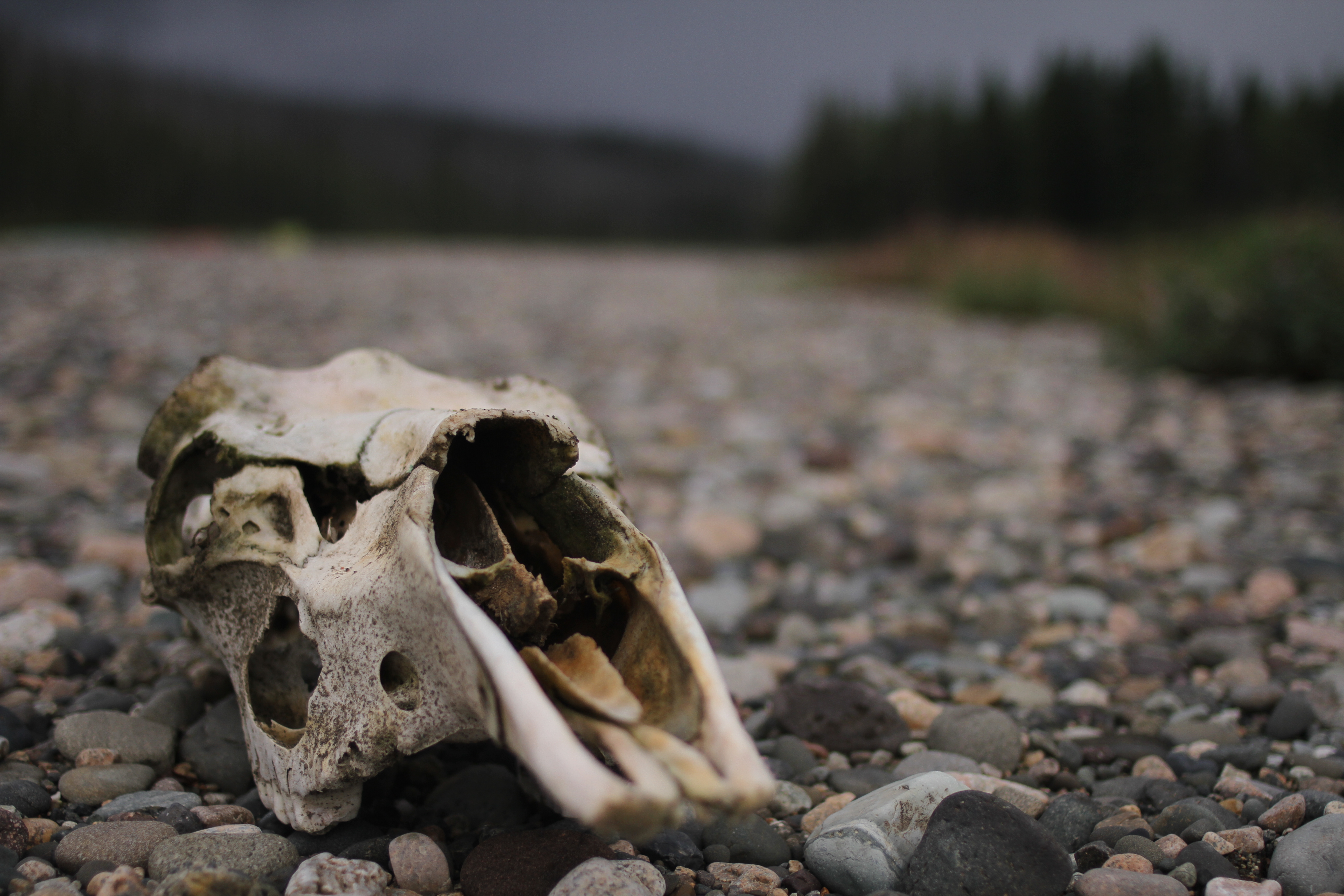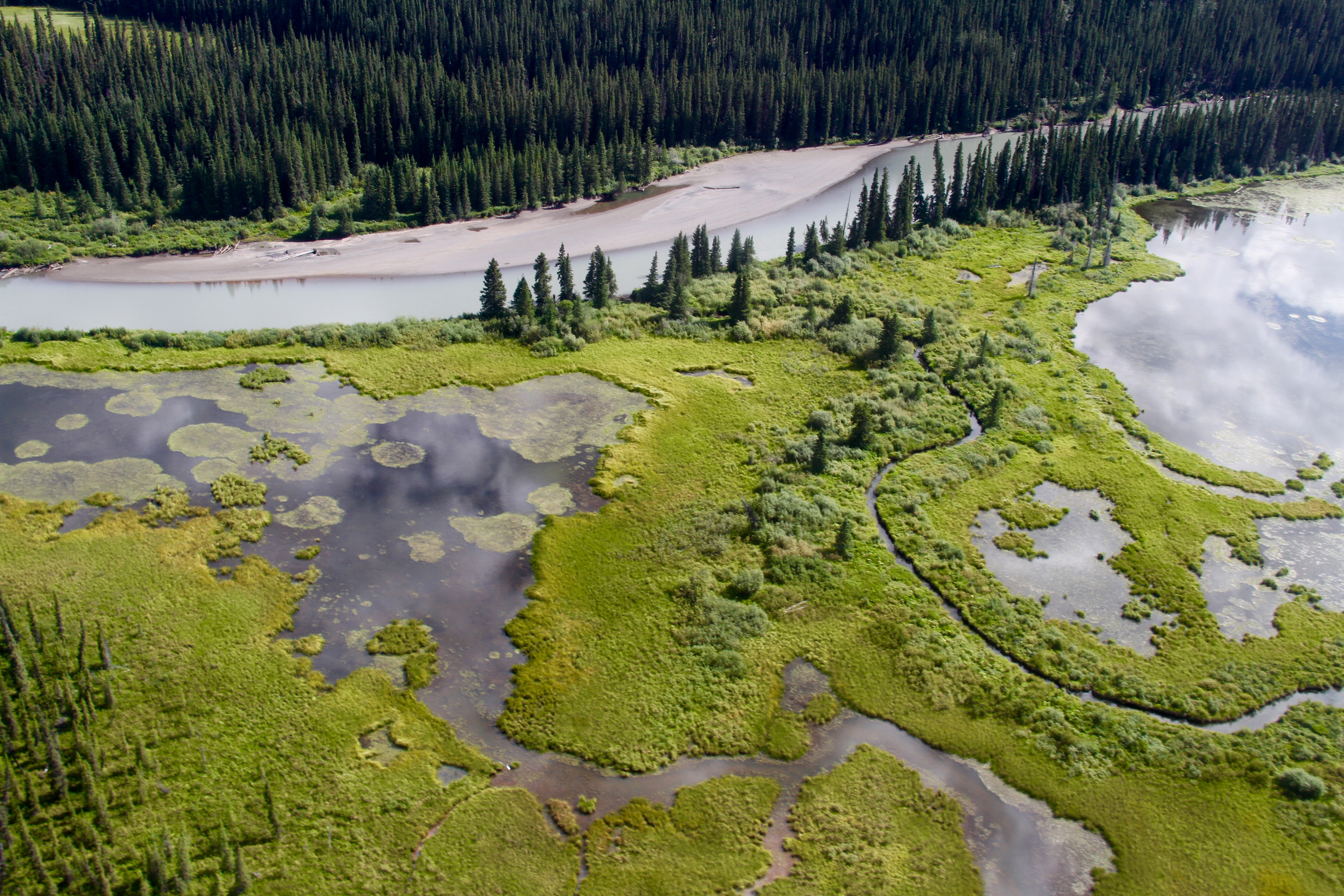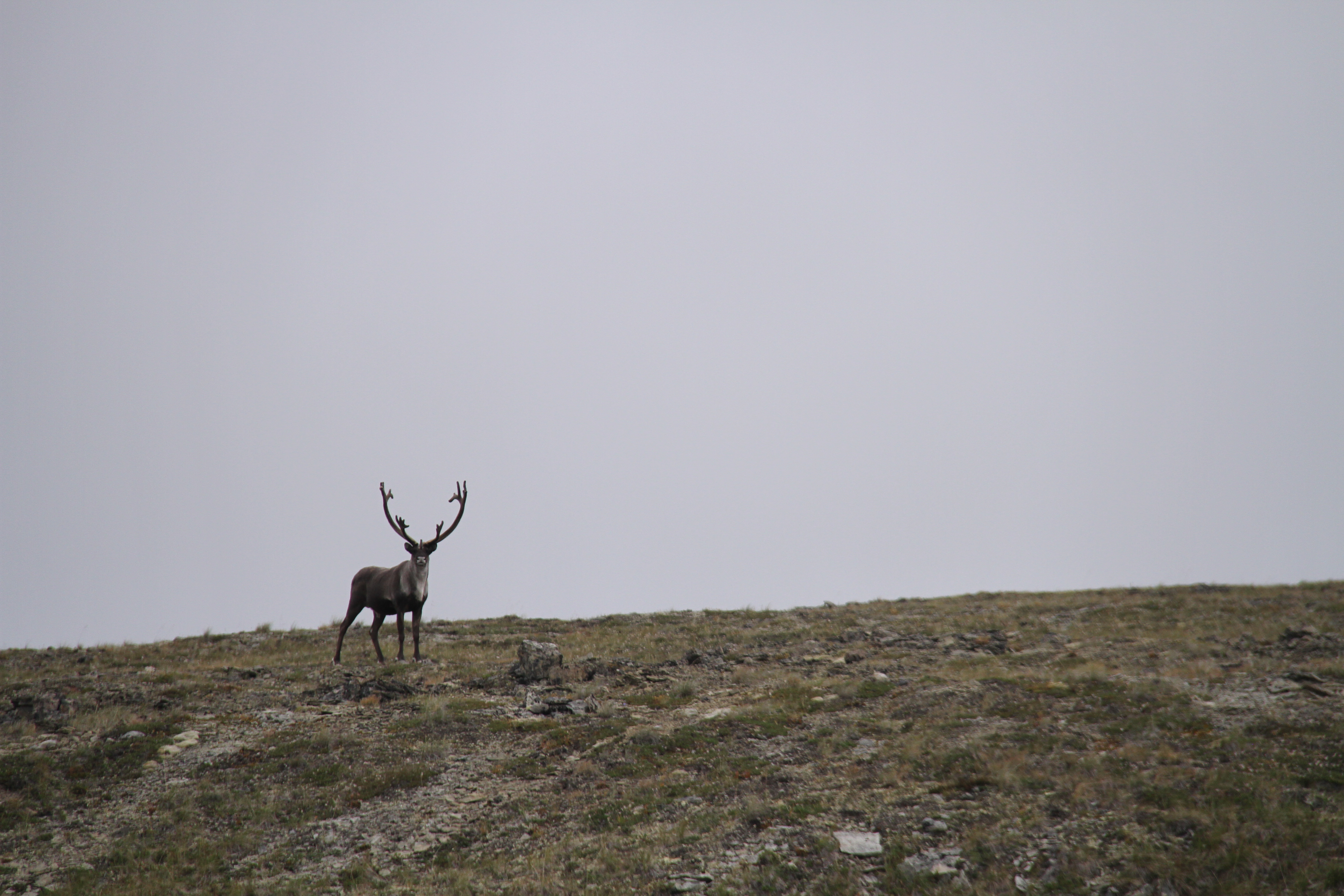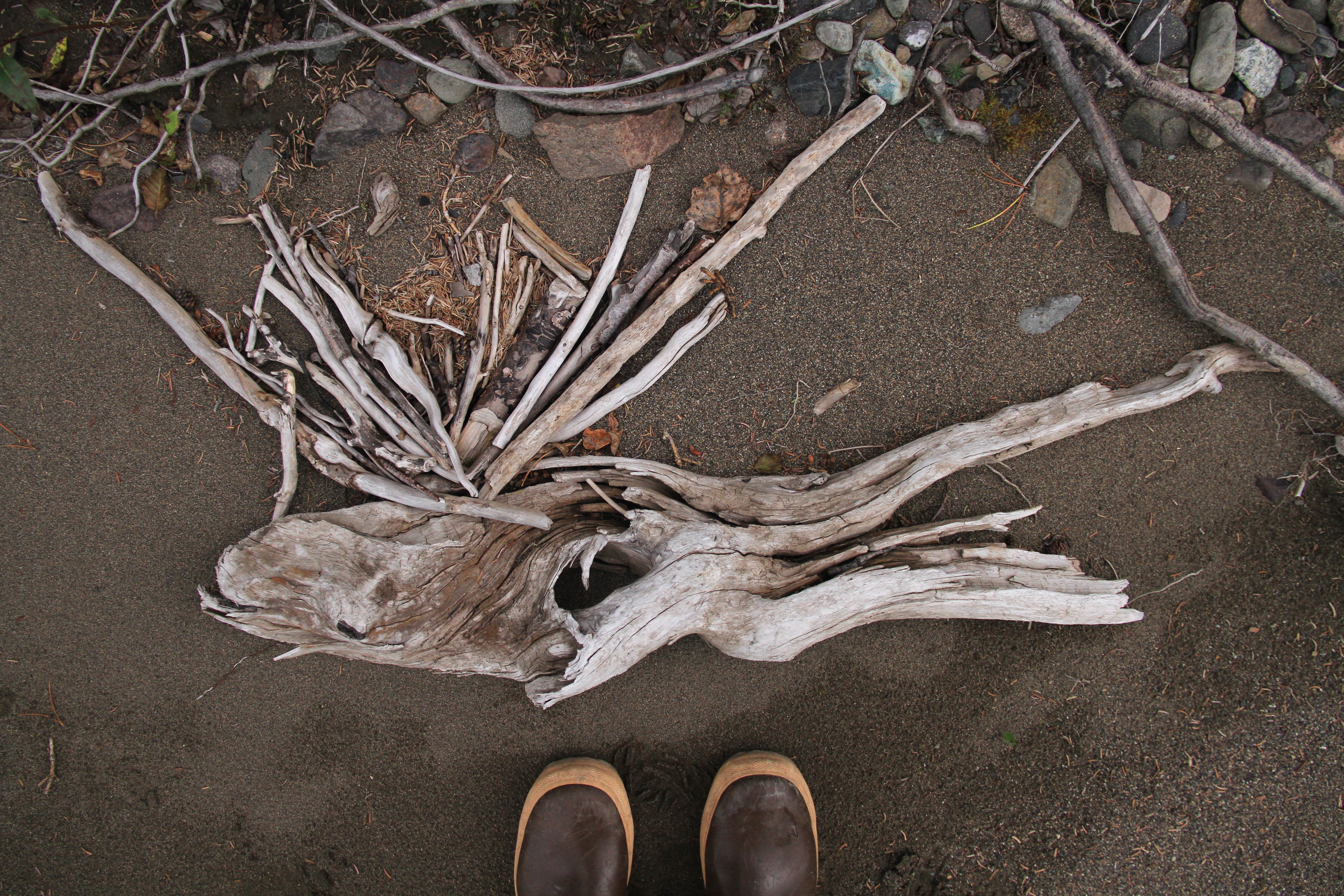 It was a bird of confluences. Nameless, to us. Gray as cloud belly, large as raptor, with eyes streaked over black as if with a stick of charcoal.
It was a bird of confluences. Nameless, to us. Gray as cloud belly, large as raptor, with eyes streaked over black as if with a stick of charcoal.
The first time I saw it, I stood shin deep in the narrow, clear Pitman River, steps away from the line of opaque jade water marking its union with the Upper Stikine River. The Stikine flows through a landscape sawed at the margins by endless mountain ranges, and is one of three great salmon-bearing rivers that originate in a swath of northern British Columbia known as the Sacred Headwaters. My present purposes were neither great nor sacred, though: I had splashed into the water to pee, or rinse my face, or both, but not in that order, when the bird caught my attention.
It moved while remaining nearly motionless. Its body was fixed in a soaring cross, with narrow, scythe-like wings and a long bill, and it swung in slow arcs a dozen feet above my head, out over the main current, then back. A juvenile gull maybe, or some searching ocean bird thrown improbably far inland. If silence were a creature, it would be this one.

It was a stormy August day, and five friends and I were in the final stretch of a two-week wilderness canoe trip that began on a tributary called the Spatsizi, and would end a couple of miles before the Stikine plunges into a tight, 45-mile-long fissure that thrums with Class V and VI whitewater. The peaks and hills we passed through on the way between are the homelands of the Tahltan, a Canadian First Nations people, and are occasionally visited by hunters, boaters and hikers from elsewhere. But save for a man tending a remote riverside lodge, we saw no one in that roadless expanse besides each other.
Little wonder, then, that the close, dark conifer forest felt both secret and secretive. Even the animals seldom appeared. We saw a bear sidle to river’s edge only to dash away. We also spotted three moose, two caribou, a couple of osprey and eagles. But each sandbar and dry braid of channel was brailed with the tracks of dozens more: bears grizzly and black, wolves with paws larger than my palms, lynx, bobcat, heavy bull moose that sank deep in the silt, beaver, porcupine. Mysterious splashes rang from the river some nights. New prints threaded between our tents some mornings. One of the moose we did see was a near apparition – walking clumsily in the current alongside our canoes one moment and then, when we turned our backs for a few seconds to navigate a riffle, vanishing without sound or trace, as if it had never been at all.

It wasn’t just the animals. Along one bar, the river’s highwater flows had left not-quite-cairns of clustered cobbles. Delicate, almost deliberate arrangements of bone-white driftwood decorated racklines and former eddies. Three uniform flat rocks the size of plates rested in a perfect row along one toppled log where beach met shelf of forest. There was a just-so-ness in the position of other things, too – caribou antlers at cliff edges. A moose skull perched at an incidental but rakish angle atop a mound of rocks. Staring.

It was as if the country itself murmured just beyond the edge of hearing, moved just beyond the edge of vision, watched us even as we watched it slip past along cobbly banks. And navigating it felt something like trying to learn a new language. In the flow of conversation, I could catch some words and details – a mentioned color here, an object there. I was just beginning to master its concepts of time, measured not in named days and dates, but in the span between meals, in our movements through deadfall or over water, in the long swing of light. But the rest of the whisperings pushed through and past me in fast currents of tone and inflection, their meanings grasped at, touched for a moment and lost.
The second time I saw one of those gray birds was on our last morning, out over the rapids and whirlpools where a creek called Beggarly pours around a sandy island into the Stikine. As I shaded my eyes, it transcribed a series of dipping, hushed loops – almost as if scrawling a message on the brightening sky – then sailed over the boils and slackwater of the downstream canyon and disappeared.
Photos by the author.
Good grief, Sarah. That’s amazing. Thank you for being so good!
Thanks to Craig Childs, I have discovered this emensley ingaging, and delightful writing. Your observations, my favorite subject, wilderness, wildlife and nature. ❤️
Thank you Sarah Gilman
Wonderful to read, such beautiful near-poetic prose imagery !
Dear Sarah,
You are a great writer. I felt the images you painted with your words. Thank you for being in this world and enriching it with your creativity!
Beautiful writing!